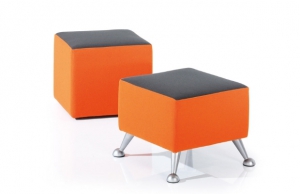 When planning your office refurbishment, fit out or office renovation it is important to recognise the importance of colour. Office furniture, partitions, screens and artwork, enable colours to be injected quickly and cost effectively into office refurbishment projects. Office furniture can be purchased in a range of MFC or veneered finishes, whilst fabrics on office chairs and screens and wall paints can be chosen to mirror and compliment corporate colours and messages.
When planning your office refurbishment, fit out or office renovation it is important to recognise the importance of colour. Office furniture, partitions, screens and artwork, enable colours to be injected quickly and cost effectively into office refurbishment projects. Office furniture can be purchased in a range of MFC or veneered finishes, whilst fabrics on office chairs and screens and wall paints can be chosen to mirror and compliment corporate colours and messages.
Once you understand color psychology and the specific psychological effects of color, you can easily transform any space into an uplifting and nurturing environment.
Color is a silent language. In his book “Color, Environment, and Human Response,” Frank Mahnke discusses how color has a vibration, like music. Mahnke goes on to explain how artists such as Paul Gauguin understood the power of color to manipulate the viewer — to evoke a visceral reaction antecedent to words.
Experiencing color is both objective and subjective.
There are visual, symbolic, syn-aesthetic, emotional, physiological and psychological effects of color. For example, there are biological reactions to color that ensure survival like knowing when food is ripe enough to eat or recognizing the changing of the seasons.
There is also a collective unconscious reaction to color that we have inherited from our ancestors — formed through the development of our species. In this way, colors have a primal significance.
Another aspect of color psychology is the conscious symbolism of colors. For example, blue represents the sky. Gold represents the sun. Color has a remarkable impact on you both psychologically and physically. When you understand the effects of certain colors, you can begin to use them to create a specific reaction.
 What may be less known about color psychology is that color influences your brain waves, your automatic nervous system and hormonal activity. For instance, if you sat in an entirely red room, your pulse and blood pressure would increase. Conversely, your blood pressure and pulse would decline in an entirely blue room.
What may be less known about color psychology is that color influences your brain waves, your automatic nervous system and hormonal activity. For instance, if you sat in an entirely red room, your pulse and blood pressure would increase. Conversely, your blood pressure and pulse would decline in an entirely blue room.
There are always personal preferences and reactions to color. These relate to your state of mind, glandular imbalances and primal memories. This quick guide to color psychology examines the universal meanings and common physiological and psychological effects of color.
Go to an individual color for more in-depth information on the symbolic and cultural references.
The List – A Quick Guide to the Psychology of Colors and Meaning of Colors
Red. Red is the most dominant and dynamic color. Psychology suggests that red is activating, stimulating, passionate, exciting, powerful, and expanding.
Orange. Orange is very stimulating, active, cheerful and sociable. It is less arousing than red and more pleasantly stimulating.
Yellow. Yellow is very happy, warm, stimulating, and expansive. It draws people out and makes people more talkative. Yellow encourages optimism and hope and helps to focus attention and stimulate intellect.
Generally, red, yellow and orange are very stimulating and active colors, while green and blue are very calming and relaxing.
Green. Green is very calming, balancing, healing, relaxing, and tranquil. It represents growth, vitality, abundance, and nature. Green stimulates possibility and is very inspiring.
Blue. Blue is calming, healing, soothing, and relaxing. Blue characterizes dependability, trustworthiness, and security. It increases creativity, contemplation, and spirituality.
Purple. Purple represents nobility, abundance, and dignity. It is very soothing and calming and is often related to intuition and spirituality.
Black. Black connotes sophistication, power, elegance, and modernity. It is also introspected and mysterious.
White. White represents clarity, innocence, cleanliness, spirituality, purity, hope, expansiveness and openness. It can also be sterile and detached.
Grey. Grey is neutral, calm, quiet, and lacks energy. According to color psychology grey can also be boring, conservative and draining to the physical body.
Brown. Brown is stable, grounding, reliable, motherly, and comfortable, and inexpensive.
Pink. Pink is sedating and calming. It also symbolizes love and romance.
Pastels. Pastels evoke openness and relaxation. Pastels are considered relieving and soothing and are even sometimes equated with sanity.
Silver. Silver is often associated with vision, clarity, insight, mental power, and intellection learning. Silver can reduce anxiety and create peace. It is often correlated to water, metal, and technology.
Gold. Gold is equated with sophistication, luxury, quality, wealth, and splendor.
To contact us for an informal discussion on your project call 01392 834980 or email via this link.

